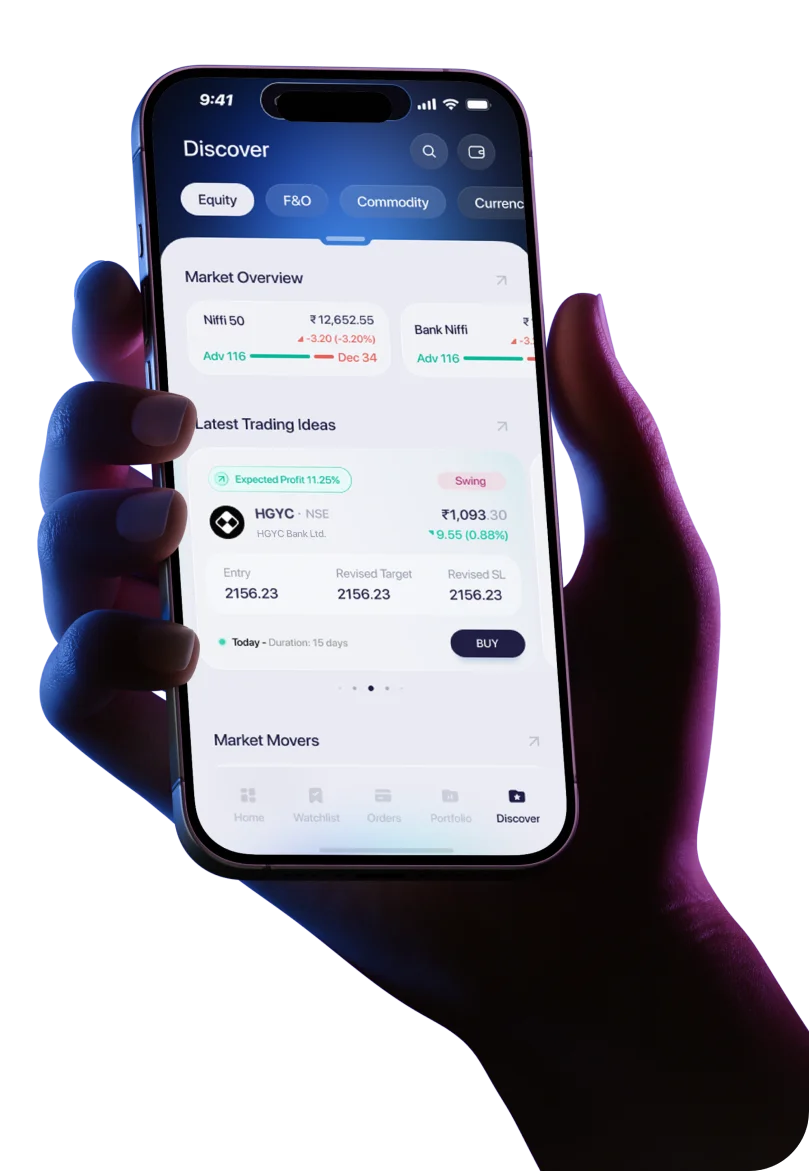Introduction
Options strategies allow traders to profit not only when markets trend strongly but also when they remain stagnant. Among the many approaches used by derivatives traders, the Short Strangle Options Strategy stands out as a popular method for generating income in neutral or range-bound markets.
This strategy involves selling one out-of-the-money (OTM) call option and one out-of-the-money put option with the same expiry. By collecting option premiums upfront, traders benefit when the underlying index or stock moves within a defined range.
In India, Short Strangles are widely deployed on Nifty and Bank Nifty weekly expiries because of their liquidity and relatively predictable ranges. While the appeal lies in steady premium income, traders must also understand the risks, margin requirements, and timing considerations before applying it.
What is the Short Strangle Options Strategy?
A Short Strangle is a two-legged options selling strategy designed for traders who expect the underlying asset to trade sideways. Here’s how it is structured:
- Sell one OTM Call Option – above the current market price.
- Sell one OTM Put Option – below the current market price.
- Both options must share the same expiry date.
The trader collects premiums from both the call and put options. If the underlying remains between the two strike prices until expiry, both options expire worthless, and the seller pockets the entire premium.
For example, if Nifty is at 22,000, you might sell a 22,800 CE and a 21,200 PE. The wider the gap between strikes, the safer the trade, but the lower the premiums.
In essence, the Short Strangle is a neutral strategy — the trader is not betting on direction but on the underlying staying within a range.
How Does It Work? With Example & Payoff
Let’s break this down with numbers:
- Underlying: Nifty at 22,000
- Sell 22,800 CE at ₹100 premium
- Sell 21,200 PE at ₹120 premium
- Total premium received = ₹220
Payoff at Expiry:
- If Nifty closes between 21,200 and 22,800 → Both options expire worthless.
- Profit = ₹220 (maximum possible).
- If Nifty closes above 22,800 → Loss begins above breakeven.
- Upper Breakeven = 22,800 + 220 = 23,020.
- Loss increases as Nifty rises beyond 23,020.
- If Nifty closes below 21,200 → Loss begins below breakeven.
- Lower Breakeven = 21,200 – 220 = 20,980.
- Loss increases as Nifty falls below 20,980.
Key Point: The maximum profit is limited to the premium received, but losses are theoretically unlimited.
When to Use Short Strangle?
The Short Strangle Options Strategy works best in low-volatility or range-bound markets where sharp moves are unlikely. Traders generally apply it when:
- The underlying has already made a strong move and is consolidating.
- Volatility is stable or declining, which reduces option premiums.
- No major events (earnings, RBI policy, Union Budget, elections) are expected.
A classic case is selling strangles on weekly Bank Nifty expiries during calm market weeks. Here, the time decay (theta) works in favor of the option seller, allowing steady profit as days pass.
Risk & Reward Profile
Understanding the risk-reward is essential:
- Maximum Profit: Limited to the total premium collected (₹220 in our example).
- Maximum Loss: Unlimited if the market breaks out in either direction.
- Breakevens: Lower strike – premium collected, and higher strike + premium collected.
Quick Comparison:
- Short Straddle: Both options sold at ATM; higher premium but smaller safe zone.
- Short Strangle: Wider strike gap provides more cushion, but lower premium.
- Iron Condor: A hedged version of strangle with limited risk, but lower reward.
Thus, while Short Strangles offer higher probability of profit, the downside risk requires careful management.
Role of Options Greeks & Volatility
The payoff of a Short Strangle is heavily influenced by Options Greeks:
- Theta (Time Decay): Works in favor — every day that passes erodes the option’s value.
- Vega (Volatility): An Increase in implied volatility (IV) hurts the seller, as premiums expand.
- Gamma/Delta: Close to expiry, directional risk rises sharply — even a small move can cause large losses.
Hence, Short Strangle traders must monitor India VIX and implied volatility trends before entering.
Trade Management & Adjustments
Successful strangle trading is not just about entry but also managing risk. Some practical steps:
- Choose strikes wisely: Pick strikes far enough to create a comfortable range, ideally with 0.20–0.30 delta.
- Set stop-loss levels: Exit if one leg doubles in premium.
- Roll positions: Shift to the next expiry if the underlying moves closer to one strike.
- Hedge risk: Buy protective options (creating an Iron Condor) to cap losses.
Discipline in adjustments separates profitable strangle traders from those who incur large losses.
India-Specific Context
In India, Nifty and Bank Nifty weekly expiries make Short Strangles particularly attractive due to high liquidity and premium decay. But there are local considerations:
- SEBI Margin Rules: Short strangles require significant margins, often upwards of ₹1.5–2 lakh per lot.
- Brokerage & Platform: Brokers like Samco offer Smart Margin to optimize margin usage.
- Taxes: Premium income is treated as business income and taxed accordingly.
Indian traders must also be alert to event-heavy weeks where volatility spikes can quickly turn profitable strangles into heavy losses.
Pros and Cons
Pros
- High probability of success in range-bound markets.
- Generates steady income from option premiums.
- Benefits from time decay.
Cons
- Unlimited loss potential in sharp moves.
- Requires high margin.
- Sensitive to sudden volatility spikes.
FAQs on Short Strangle Options Strategy
- Is Short Strangle good for beginners?
No, it’s better suited for experienced traders who understand risk management. Beginners may find unlimited risk hard to handle. - How is it different from Short Straddle?
A Short Straddle sells ATM options, while a Short Strangle uses OTM strikes. Straddles give higher premiums but less safety. - What if the stock/index gaps beyond strike prices?
Losses can be significant. Always use stop-loss or hedge with protective options. - Can I use this strategy in weekly options?
Yes, Nifty and Bank Nifty weekly expiries are popular for strangles, but ensure event-free weeks. - How are profits taxed in India?
Profits are considered business income and taxed at applicable slab rates. Audit requirements may apply if turnover is high.
Conclusion
The Short Strangle Options Strategy is a powerful income-generating tool for traders who expect markets to remain range-bound. By selling OTM call and put options, traders can steadily collect premiums as time decay erodes option value.
However, the rewards come with significant risks — especially during unexpected breakouts or volatility spikes. In India, with liquid weekly expiries on Nifty and Bank Nifty, strangles are widely used, but only by those who respect risk management.
For retail traders, the key takeaway is clear: Short Strangle Options can be profitable, but must be deployed responsibly with defined stop-loss and adjustment rules.




 Easy & quick
Easy & quick
Leave A Comment?